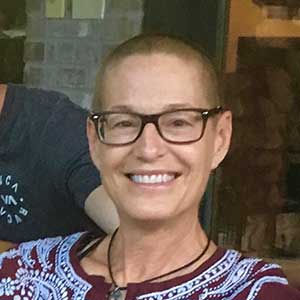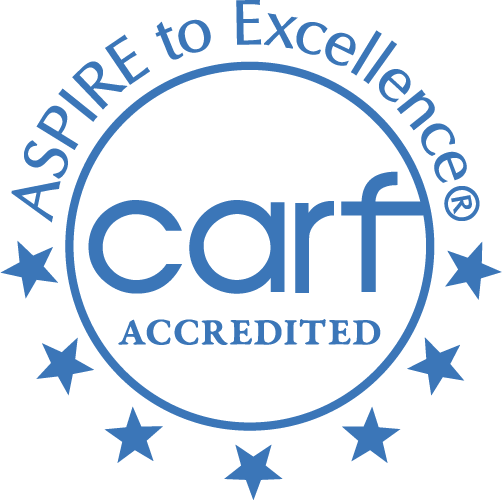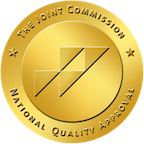Skip To Rehab Listing
However, for people struggling with alcohol and drug abuse problems, Bethesda can also offer solutions in the form of 26 addiction treatment facilities intended to help patients in their recoveries.
Drug and Alcohol Rehab Methods and Settings
Bethesda area residents who have a problem with alcohol and drug addiction have multiple recovery settings available to them, such as the following: short term rehabs, intensive outpatient treatment, long term rehab programs, detox programs, inpatient drug rehab centers.
These rehabs make addiction treatment easy to obtain, with convenient locations and a number of different rehabilitation modalities from which to choose, such as these listed here: cognitive/behavior therapy, vocational rehabilitation services, dual diagnosis drug rehab, trauma therapy, 12-step facilitation approach, matrix model.
Special Programs for Alcohol and Drug Treatment
Alcohol and drug abuse affects every individual differently. In order to accommodate these differences and deliver a more customized treatment, drug and alcohol treatment programs in Bethesda provide a number of special programs for [patients such as: active duty military, transgender or (LGBT) clients, child care for clients children, co-occurring mental and substance abuse disorders, seniors or older adults, residential beds for client's children.
Clients who believe they may need these special programs can explore them with the rehab facility to receive support that is designed to increase the chances of lasting recovery.
Rehab Payment Alternatives
Residents of Bethesda come from varied financial situations, making it vital for rehabilitation programs to offer several payment alternatives that place treatment within financial reach. Patients can expect to get payment alternatives at close by alcohol and drug rehabilitation programs such as the following: private insurance, cash or self-payment, medicaid, medicare, payment assistance, other state funds, state corrections or juvenile justice funds.
Despite a client's financial status, payment should not be a barrier to rehab. Addiction treatment programs guide people through their payment alternatives and help them find a way to afford their treatment.
The desired outcome of multiple rehabs, methods, programs, and payment alternatives is that treatment for substance abuse is accessible for as many people who really need it.
Commonly Asked Questions about Addiction and Treatment
Why can't a person just simply stop abusing drugs?
Drug addiction, often referred to as Substance Use Disorder (SUD) in the mental health field, is a complex condition characterized by compulsive drug use despite harmful consequences. It's considered a brain disease because drugs change the brain's structure and how it works, leading to changes that can persist long after the cessation of drug use. Here are several reasons why it's not simply a matter of willpower to stop using drugs:
Physical Dependence: Repeated drug use can lead to physical dependence, where the body adapts to the drug and requires it to function normally. Abruptly stopping the drug can lead to withdrawal symptoms, which can be uncomfortable or even dangerous, creating a compelling reason to continue using the drug.
Changes in Brain Function: Drug use can disrupt critical brain areas involved in reward, motivation, learning, judgment, and memory. This can lead to intense cravings for the drug and impaired ability to resist drug use, even in the face of negative consequences.
Co-occurring Mental Health Disorders: Many individuals with substance use disorders also have other mental health disorders, such as depression, anxiety, or post-traumatic stress disorder. These individuals may use drugs as a way to self-medicate, making it difficult to stop without treating the underlying condition.
Environmental Factors: Social and environmental cues can trigger cravings and make it difficult to avoid substance use. This can include things like spending time with friends who use drugs, living in a stressful or chaotic environment, or even visiting places where they used to use drugs.
Psychological Factors: Some individuals may use drugs to cope with stress, trauma, or other adverse experiences. Without healthier coping mechanisms and support, it can be very challenging to stop using drugs.
It's essential to understand that addiction is a chronic disease, similar to diabetes or heart disease, and not a moral failing or lack of discipline. Just as with other chronic diseases, treatment often isn't a matter of simply deciding to stop. It usually involves medical intervention, behavioral therapies, and long-term support. With the right treatment and support, recovery from addiction is entirely possible.
What are the different ways to pay for addiction treatment?
"Paying for addiction treatment can be a significant concern for individuals and families seeking help. However, there are various options available to help cover the costs, making it more accessible to those in need. Here are some common ways to pay for addiction treatment:
- Insurance: Many health insurance plans, including those offered through the Affordable Care Act (ACA) or provided by employers, cover addiction treatment services to some extent. Coverage may include detoxification, inpatient or outpatient treatment, counseling, and medication-assisted treatment. It is essential to review your insurance policy or consult with your insurance provider to understand the specifics of your coverage, any copayments, and deductibles that may apply.
- Medicaid and Medicare: Both Medicaid and Medicare, government-funded health insurance programs, provide coverage for addiction treatment services for eligible individuals. Medicaid coverage varies by state, so it is crucial to check the guidelines and benefits for the state you reside in. Medicare covers addiction treatment under Part A (hospital services), Part B (outpatient care), and Part D (prescription medications).
- Private pay: Some individuals may choose to pay for addiction treatment services out of pocket, either because they do not have insurance coverage or prefer not to use their insurance for privacy reasons. Many treatment facilities offer sliding scale fees, payment plans, or discounts to make treatment more affordable for private pay clients.
- State-funded treatment programs: In many states, there are publicly funded addiction treatment programs that offer services to residents at low or no cost. These programs often prioritize individuals with low income, no insurance, or severe addiction issues. Availability and eligibility criteria may vary by state, so it is important to research and contact your state's department of health and human services for more information.
- Employee Assistance Programs (EAPs): Some employers offer Employee Assistance Programs, which provide confidential support, resources, and referrals for employees dealing with personal issues, including addiction. EAPs may cover the cost of short-term counseling or help connect employees with appropriate addiction treatment services.
- Scholarships and grants: Some treatment facilities, non-profit organizations, or advocacy groups may offer scholarships or grants to help cover the cost of addiction treatment for individuals in need. These opportunities may be limited and often require an application process, but they can be a valuable source of financial assistance.
- Crowdfunding and fundraising: Some individuals turn to crowdfunding platforms or organize fundraising events to help cover the costs of addiction treatment. This option allows friends, family, and community members to contribute and support the individual's journey to recovery.
- Loans: Personal loans or healthcare-specific loans can be used to finance addiction treatment. While taking on debt may not be ideal, it is an option to consider if other funding sources are not available.
"
How can society prevent teen substance abuse?
Preventing teen substance abuse requires a comprehensive, multifaceted approach that involves various sectors of society, including families, schools, communities, and the healthcare system. Here are some strategies that can be employed:
Education and Awareness: Schools and communities can provide education about the dangers of substance abuse, the nature of addiction, and the benefits of healthy lifestyle choices. This education should be accurate, age-appropriate, and engaging.
Family Engagement: Parents and caregivers play a critical role in prevention. They can talk openly with their children about substance abuse, set clear expectations around substance use, monitor their children's activities and friendships, and provide a supportive and nurturing environment.
Early Intervention: Early identification of risk factors for substance abuse (such as mental health issues, academic struggles, or behavioral problems) can allow for timely intervention. Healthcare providers, educators, and parents can all play a role in identifying and addressing these risk factors.
Access to Mental Health Services: Teens with mental health conditions are at a higher risk of substance abuse. Ensuring access to mental health services can help address these underlying issues and reduce the risk of substance abuse.
Healthy Activities: Providing teens with opportunities for healthy, engaging activities (like sports, arts, volunteering, etc.) can reduce boredom and stress, provide a sense of purpose and belonging, and offer positive alternatives to substance use.
Community Support: Communities can create environments that support healthy choices and discourage substance use. This can include things like enforcing age restrictions on the sale of alcohol and tobacco, providing safe and substance-free recreational opportunities for teens, and fostering a community culture that values health and wellbeing.
Substance Abuse Programs: Schools and communities can implement evidence-based substance abuse prevention programs. These programs can teach skills for resisting peer pressure, making healthy decisions, and coping with stress.
Policy Measures: Policies can be implemented that help prevent substance abuse, such as those that limit the advertising of alcohol and tobacco products, regulate the prescription of addictive medications, and support substance abuse prevention and treatment services.
Peer Support and Leadership: Peer-led initiatives can be very effective in preventing teen substance abuse. Teens may be more likely to listen to and be influenced by their peers. Peer leaders can model healthy behaviors, challenge norms around substance use, and provide support to their peers.














